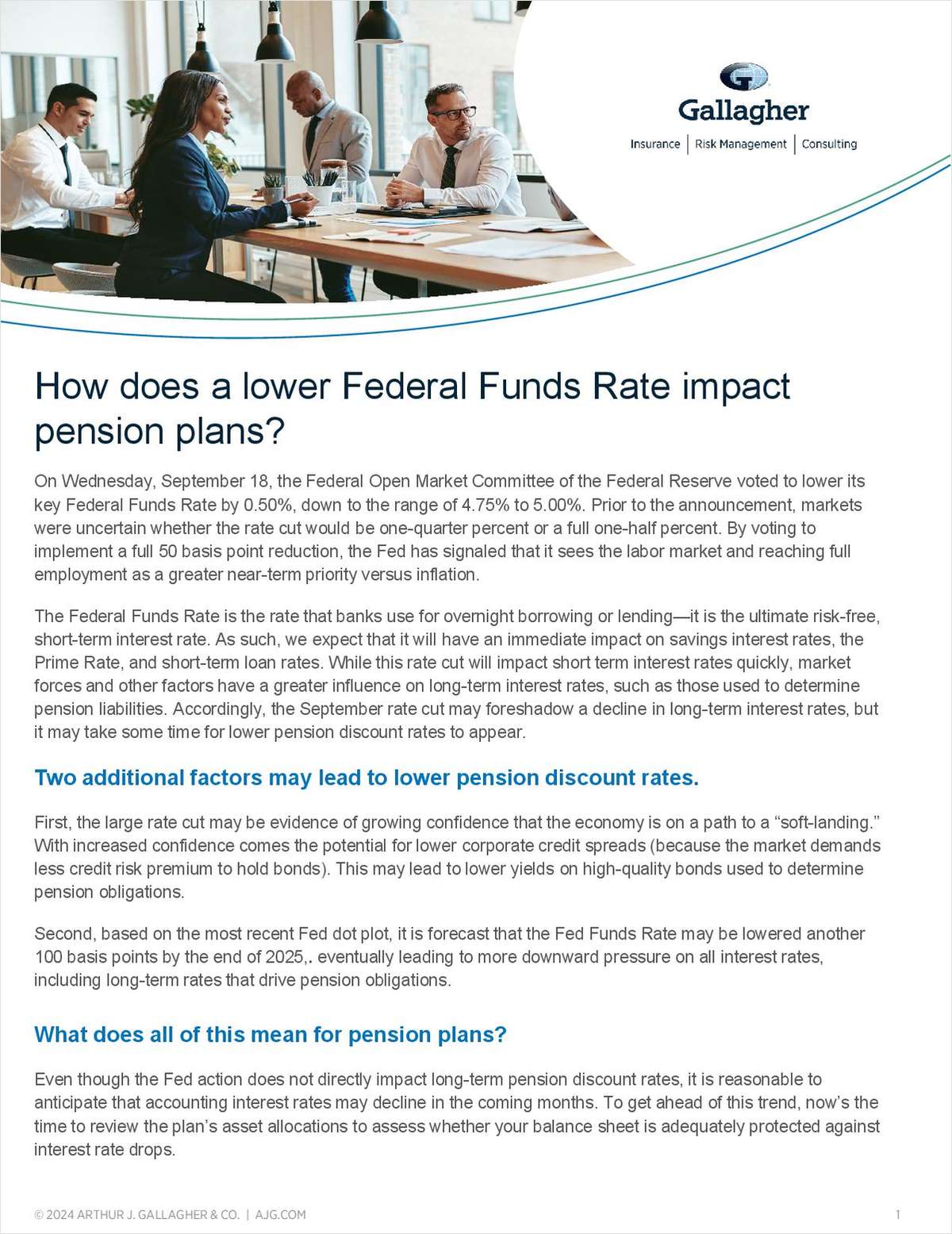<p>WASHINGTON – The Federal Open Market Committee said it is leaving the federal funds rate unchanged at 1.75% based on signs that the U.S. economy is gaining strength. The decision to allow the key rate to remain unchanged follows 11 consecutive cuts last year that dropped the overnight rate from 6.00% at the start of the year to the current 1.75%. In the policy statement accompanying its decision, the FOMC said "the outlook for economic recovery has become more favorable," but did not close the door on another rate cut. Risks to the fragile economy remain "weighted mainly toward conditions that may generate economic weakness in the foreseeable future," the statement concluded. NAFCU economist Jeff Taylor said the FOMC is waiting to see if the apparent recent good news about the economy can be sustained. "The biggest risk now is coming out of the recession, then dropping back because there isn't sustainable consumption," he said. Taylor said the policy statement indicates the FOMC members think the economy is headed in the right direction but has signaled they are "ready to act" by lowering rates again if necessary. CUNA economist Bill Hampel said the FOMC is taking its foot off the gas because its aggressive rate cutting policies of the past 12 months are taking hold. Further cuts "would kick in during the third or fourth quarter when it is unlikely the economy will need any stimulus," he said. The FOMC decision was announced on the same day the US Commerce Department reported the Gross Domestic Product (GDP) grew 0.2% in the fourth quarter. This would mark an end to the recession if the figure is not revised downward. Both the NAFCU and CUNA economists caution that some of the apparent strength of the fourth quarter could have been borrowed from the current quarter. The 0.0% t auto financing schemes and low mortgage interest rates probably prompted consumers to move these big purchases up by several months. "I still think there is a chance for a flat first quarter" in terms of GDP growth, Taylor said. The early purchases suggest that "the first quarter may be weaker" than the fourth, Hampel said, but added the latest economic figures make him more optimistic. "This year will be stronger than I had thought a few months ago."</p>
Complete your profile to continue reading and get FREE access to BenefitsPRO, part of your ALM digital membership.
Your access to unlimited BenefitsPRO content isn’t changing.
Once you are an ALM digital member, you’ll receive:
- Breaking benefits news and analysis, on-site and via our newsletters and custom alerts
- Educational webcasts, white papers, and ebooks from industry thought leaders
- Critical converage of the property casualty insurance and financial advisory markets on our other ALM sites, PropertyCasualty360 and ThinkAdvisor
Already have an account? Sign In Now
© 2024 ALM Global, LLC, All Rights Reserved. Request academic re-use from www.copyright.com. All other uses, submit a request to [email protected]. For more information visit Asset & Logo Licensing.








